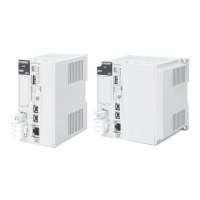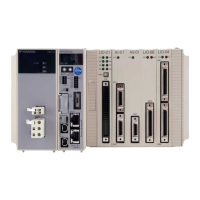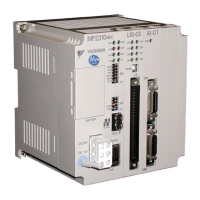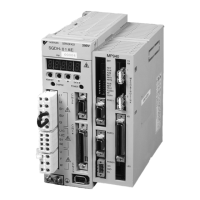3.1 Basic Functionality
3.1.2 Registers
3-18
Motion Program Conceptual Diagram
Structure of Register Addresses
Register Types
This section describes global and local registers.
Global Registers
Global registers are shared by ladder programs, user functions, motion programs, and
sequence programs. In other words, the operation results of a ladder program can be used by
other user functions, motion programs, or sequence programs.
You can also use index registers or array registers as variables to address specific registers.
Refer to the following sections for details.
Index Registers (i, j) on page 3-25
Array Registers ([ ]) on page 3-27
Typ e Name
Designation
Method
Usable Range Description
S
System registers
(S registers)
SBnnnnnh,
SWnnnnn,
SLnnnnn,
SQnnnnn,
SFnnnnn,
SDnnnnn,
SAnnnnn
SW00000 to
SW65534
These registers are prepared by the system.
They report the status of the Machine Controller
and other information.
The system clears the registers from SW00000
to SW00049 to 0 at startup.
They have a battery backup.
M
Data registers
(M registers)
MBnnnnnnnh,
MWnnnnnnn,
MLnnnnnnn,
MQnnnnnnn,
MFnnnnnnn,
MDnnnnnnn,
MAnnnnnnn
MW0000000
to
MW1048575
These registers are used as interfaces between
programs.
They have a battery backup.
Continued on next page.
Motion program
(MPM001)
MSEE MPS002;
D registers
(DW00000
to
DW00031)
Subprogram
(MPS002)
D registers
(DW00000
to
DW00031)
Sequence program
(SPM003)
D registers
(DW00000
to
DW00031)
Subprogram
(SPS004)
D registers
(DW00000
to
DW00031)
SSEE SPS004;
D registers cannot be shared between
different drawings.
D registers cannot be shared between
different drawings.
Register address = S W 00000
Range (The number of digits depends on the register type and data type.)
Data type
Register type
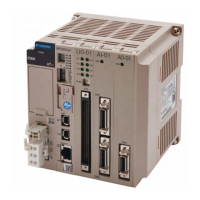
